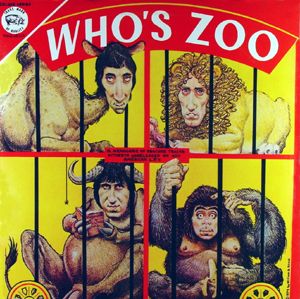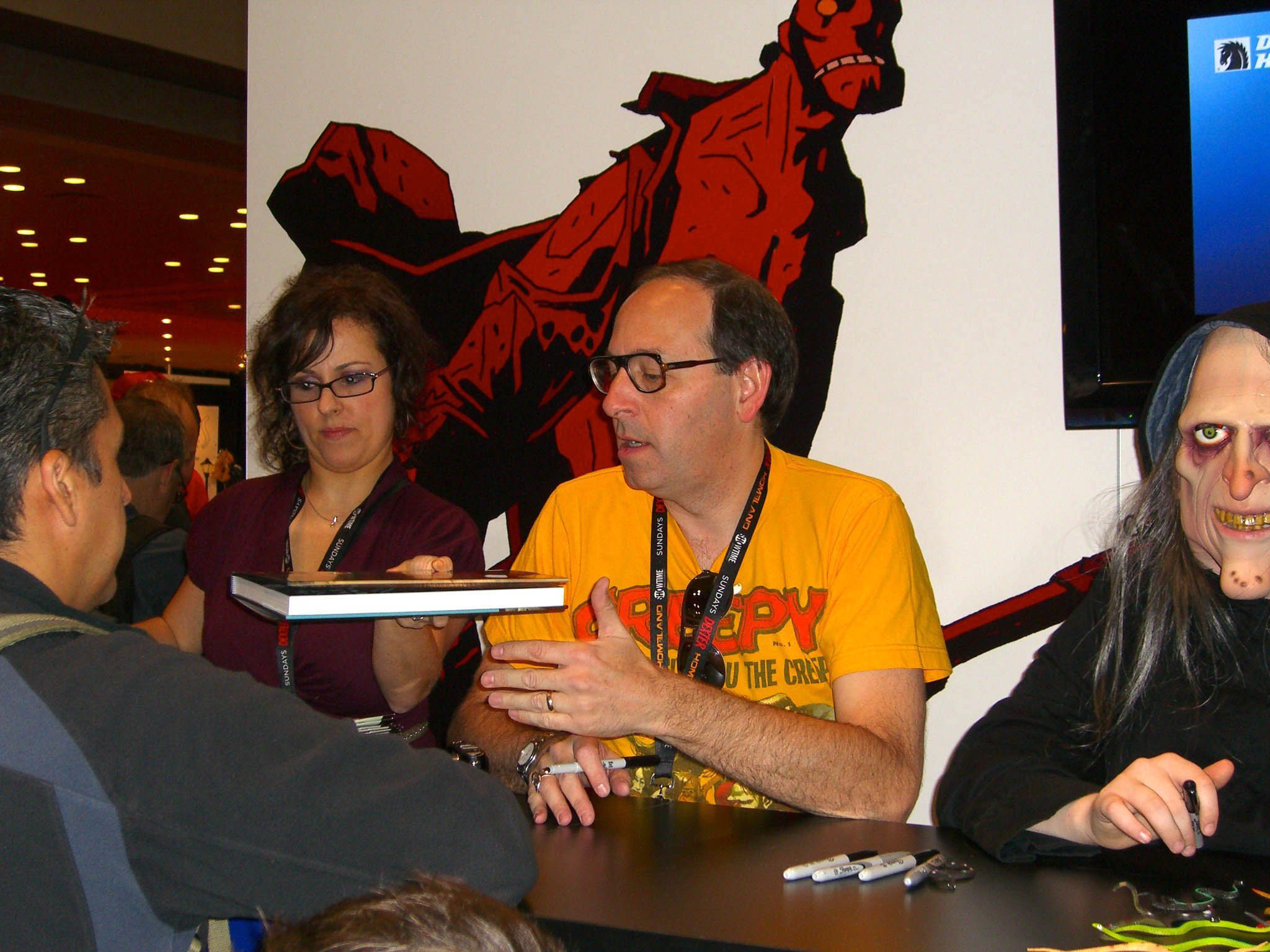|
Alien Worlds
''Alien Worlds'' is an American science fiction anthology comic that was published by Pacific Comics and, later, Eclipse Comics, in the early 1980s. It was edited by Bruce Jones and April Campbell.Johnston, Rich"When Diamond Comic Distributors Flexed Its Censorial Muscles...,"''Bleeding Cool'' (December 29, 2018). Publication history ''Alien Worlds'' was published on a bi-monthly schedule by Pacific Comics from December 1982 to April 1984 (eight issues, including an offshoot ''Three Dimensional Alien Worlds'' published in July 1984). After Pacific went bankrupt, two final issues were published by Eclipse Comics in November 1984 and January 1985. In 1985, soon after the cancellation of ''Alien Worlds'', Eclipse began publishing a similar science-fiction-themed anthology, '' Alien Encounters''. The title ceased publication in 1987 after fourteen issues. In 1986, Blackthorne Publishing published their own one-shot ''Alien Worlds'', with reprints of stories taken from earlier ... [...More Info...] [...Related Items...] OR: [Wikipedia] [Google] [Baidu] |
Frank Brunner
Frank Brunner (born February 21, 1949) is an American comics artist and illustrator best known for his work at Marvel Comics in the 1970s. Early life Brunner attended Manhattan's High School of Art and Design. He was in the same graduating class as Larry Hama and Ralph Reese. He studied at the New York University Film School. Career Comics Brunner entered the comics profession as a horror writer-artist for the black-and-white comics magazines ''Web of Horror'', '' Creepy'', ''Eerie'', and ''Vampirella''. His first work for Marvel Comics was inking an 11–page Watcher backup story in ''The Silver Surfer'' #6 (June 1969). Brunner's best-known color-comics work is his Marvel Comics collaboration with writer Steve Engelhart on the supernatural hero Doctor Strange in '' Marvel Premiere'' #9–14 (July 1973–March 1974) and in ''Doctor Strange: Master of the Mystic Arts'' #1–2 and #4–5 (June–August 1974 and Oct.–Dec. 1974). The two killed Dr. Strange's mentor, the Ancien ... [...More Info...] [...Related Items...] OR: [Wikipedia] [Google] [Baidu] |
Jan Strnad
Jan Steven Strnad (sometimes credited as J. Knight) is an American writer of comic books, horror, and science fiction. He is known for his many collaborations with artist Richard Corben, as well as his work in the ''Star Wars'' expanded universe, the majority of which has been published by Dark Horse Comics. He has also written for DC Comics, Marvel Comics, Eclipse Comics, and Fantagraphics Books. Biography A native of Wichita, Kansas, of Czech descent, Strnad was influenced by such writers as Mark Twain and John Steinbeck, as well as DC and Marvel comic books. He was active in comics fandom in the 1960s and contributed to fanzines such as ''Rocket's Blast Comicollector'', where he wrote the column "Eyeing the Egos". He also published his own zine, '' Anomaly'', until it was taken over by Bud Plant. Strnad's first professional comics were collaborations with Richard Corben, published in Rip Off Press's ''Fantagor.'' Other collaborations were published by Warren Publish ... [...More Info...] [...Related Items...] OR: [Wikipedia] [Google] [Baidu] |
Tim Conrad
Tim Conrad (born 6 January 1951) is an Australian rowing coach and former Olympian rower. He was a five time national champion and competed in the men's eight event at the 1976 Summer Olympics. Club and state rowing Raised in Brisbane, Conrad attended Brisbane State High School where he took up rowing and matriculated in 1969. He studied architecture at the University of Queensland and rowed in the University's men's eight at the 1971 Australian Intervarsity Championships. Conrad first made state selection for Queensland in the men's senior eight which contested the 1972 King's Cup at the Interstate Regatta. In Sydney, Conrad rowed from firstly the Sydney University Boat Club and later the UNSW Rowing Club. He made state selection for New South Wales in the men's senior eight which contested the 1973 King's Cup at the Interstate Regatta. He then rowed in the victorious New South Wales eights of 1974, 1975 and 1976. At the 1974 Australian Rowing Championships Conrad raced fo ... [...More Info...] [...Related Items...] OR: [Wikipedia] [Google] [Baidu] |
Thomas Jane
Thomas Jane (born Thomas Elliott III; February 22, 1969) is an American actor. He is known for appearing in the films Padamati Sandhya Ragam (1987), ''Boogie Nights'' (1997), '' Deep Blue Sea'' (1999), '' The Punisher'' (2004), '' The Mist'' (2007), ''Mutant Chronicles'' (2008), ''1922'' (2017), and '' The Predator'' (2018). Jane's television roles include Mickey Mantle in the television film '' 61*'' (2001), starring in the HBO series ''Hung'' (2009–2011) and the Syfy/Amazon Video series ''The Expanse'' (2015–2022). He is the founder of RAW Studios, an entertainment company that releases comic books he has written, the first of which was '' Bad Planet''. He made his directorial debut with the crime thriller ''Dark Country'' (2009), in which he also starred. Early life Jane was born February 22, 1969, in Baltimore, Maryland, the son of Cynthia (''née'' Jane), an antiques dealer, and Thomas Elliott Jr., a genetic engineer. He is of Irish, Scottish, and some German-Jewi ... [...More Info...] [...Related Items...] OR: [Wikipedia] [Google] [Baidu] |
Joe Chiodo
Joe Chiodo is an American artist and colorist who has worked in the comics industry. He has been recognized for his work with a nomination for the Comics Buyer's Guide Favorite Colorist Award in 1997 (with the company Wildstorm FX and colleague Jessica Ruffner), and in 1998 under his own name. Biography Chiodo was born on January 22, 1958, the youngest of four boys and raised in . He graduated from Andrew Hill High School in 1975. He traveled to various places such as New York and Los Angeles, where he worked for a diverse client base, doing book covers, and other work for toy companies, games, and comics, eventually settling i ...[...More Info...] [...Related Items...] OR: [Wikipedia] [Google] [Baidu] |
William Stout
William Stout (born September 18, 1949) is an American fantasy artist and illustrator with a specialization in paleontological art. His paintings have been shown in over seventy exhibitions, including twelve one-man shows. He has worked on over thirty feature films, doing everything from storyboard art to production design. He has designed theme parks and has worked in radio with the Firesign Theatre. Biography Comics and music industry In 1973 Stout began drawing album covers for the Trademark of Quality bootleg record label. He created 42 sleeves for the label and its subsidiaries, including the Rolling Stones' ''All-Meat Music'' (his first), the Yardbirds' ''Golden Eggs'' and ''More Golden Eggs'', and the Who's ''Who's Zoo'' and ''Tales from the Who''. He became associated with the Firesign Theatre, and designed his first official album cover, ''In the Next World, You're on Your Own ''In the Next World, You're on Your Own'' is the ninth and last comedy album recorded ... [...More Info...] [...Related Items...] OR: [Wikipedia] [Google] [Baidu] |
John Bolton (comics)
John Bolton (born 23 May 1951 in London, England) is a British comic book artist and illustrator most known for his dense, painted style, which often verges on photorealism. He was one of the first British artists to come to work in the American comics industry, a phenomenon which took root in the late 1980s and has since become standard practice. Biography Bolton's introduction to comics came about quite casually after he graduated from East Ham Technical College (whose former alumni include Gerald Scarfe, Barry Windsor-Smith and Ralph Steadman) with a degree in graphics and design. His first works in Great Britain were for magazines like '' Look In'' (alongside other British talents such as Arthur Ranson, Angus P. Allan and Jim Baikie), '' The House of Hammer'',Dakin, John. "John Bolton: Britain's Foremost Fantasy Artist, from Dracula to the Bionic Woman," ''The Comics Journal'' #55 (Apr. 1980), pp. 54–61. and ''Warrior'' (edited by Dez Skinn). In 1981 Marvel Comics' ... [...More Info...] [...Related Items...] OR: [Wikipedia] [Google] [Baidu] |
Twisted Tales
''Twisted Tales'' was a horror comics anthology published by Pacific Comics and, later, Eclipse Comics, in the early 1980s. The title was edited by Bruce Jones and April Campbell. Publication history ''Twisted Tales'' was published on a bi-monthly schedule by Pacific Comics from November 1982 to May 1984 (eight issues). After Pacific went bankrupt, two final issues were published by Eclipse Comics in November and December 1984. In August 1986, Blackthorne Publishing released ''Twisted Tales 3-D #1'' (#7 in their 3-D series), with reprints of stories taken from earlier issues. In November 1987 a ''Twisted Tales'' trade paperback was released by Eclipse Comics with a Dave Stevens cover, featuring previously unpublished stories and art. With three exceptions ( William F. Nolan's "The Party" in Issue # 8, Dennis Etchison's "Wet Season" in Issue #9, and David Carren's "If She Dies" in issue #10, which was later adapted into an episode of the 1980s revival of ''The Twilight Zone ... [...More Info...] [...Related Items...] OR: [Wikipedia] [Google] [Baidu] |
1950s In Film
The decade of the 1950s in film involved many significant films. Events Films of the 1950s were of a wide variety. As a result of the introduction of television, the studios and companies sought to put audiences back in theaters. They used more techniques in presenting their films through widescreen and big-approach methods, such as Cinemascope, VistaVision, and Cinerama, as well as gimmicks like 3-D film. Big production and spectacle films were perfect for this gained popularity, with the many historic and fantasy epics like ''The Robe'' (1953),''The Story of Robin Hood and His Merrie Men'' (1952), ''The Ten Commandments'' (1956), '' The Seventh Voyage of Sinbad'' (1958), and '' Ben-Hur'' (1959). Other big-scoped films thrived internationally, too, such as Soviet fantasy director Aleksandr Ptushko's mythological epics '' Sadko'', ''Ilya Muromets'', and ''Sampo'', and Japanese director Akira Kurosawa's historic ''Seven Samurai'', ''Throne of Blood'', and ''Rashomon''. Toshiro Mif ... [...More Info...] [...Related Items...] OR: [Wikipedia] [Google] [Baidu] |
Eerie
''Eerie'' was an American magazine of horror comics introduced in 1966 by Warren Publishing. Like '' Mad'', it was a black-and-white magazine intended for newsstand distribution and did not submit its stories to the comic book industry's voluntary Comics Code Authority. Each issue's stories were introduced by the host character, Cousin Eerie. Its sister publications were '' Creepy'' and ''Vampirella''. Publication history The first issue cost 35¢, was published in September 1966 and only had a 200-issue run of an "ashcan" edition. With a logo by Ben Oda, it was created overnight by editor Archie Goodwin and letterer Gaspar Saladino to establish publisher Jim Warren's ownership of the title when it was discovered that a rival publisher (later known as Eerie Publications) would be using the name. Warren explained, "We launched ''Eerie'' because we thought '' Creepy'' ought to have an adversary. The Laurel and Hardy syndrome always appealed to me. ''Creepy'' and ''Eerie'' a ... [...More Info...] [...Related Items...] OR: [Wikipedia] [Google] [Baidu] |
Creepy (magazine)
''Creepy'' was an American horror-comics magazine launched by Warren Publishing in 1964. Like '' Mad'', it was a black-and-white newsstand publication in a magazine format and did not carry the seal of the Comics Code Authority. An anthology magazine, it initially was published quarterly but later went bimonthly. Each issue's stories were introduced by the host character, Uncle Creepy. Its sister publications were ''Eerie'' and ''Vampirella''. Launch Illustrator and editor Russ Jones, the founding editor of ''Creepy'' in 1964, said he approached '' Famous Monsters of Filmland'' magazine publisher Jim Warren with the idea of horror comics similar to the 1950s' EC Comics comic books. Warren also choose not to use the comics industry's voluntary self-censorship Comics Code Authority for his black and white magazines. Warren eventually agreed. Jones recalled that: Joe Orlando was not only an illustrator for ''Creepy'' but also a story editor on early issues, with his masthe ... [...More Info...] [...Related Items...] OR: [Wikipedia] [Google] [Baidu] |


